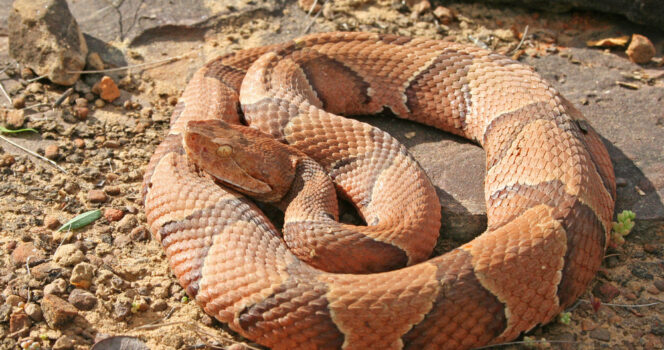
Introduction
Let's be honest—nothing gets your heart pounding like the thought of a snake bite. One minute you're enjoying a walk in the woods, and the next, boom—you've stepped too close to something scaly. Before you leap into cowboy mode and try to suck the venom out (please don't), let's get real about what actually works when it comes to snake bites.
Most snake bites aren't deadly, especially in places like the U.S., but they can be dangerous if not handled properly. Knowing how to react could save your life—or someone else's.
How Common Are Snake Bites?
You may be surprised to hear that snake bites are actually pretty rare. In the U.S., around 7,000–8,000 venomous snake bites occur annually, but deaths are extremely low—fewer than 10 a year.
Worldwide, the numbers jump significantly, with millions of bites and over 100,000 deaths annually. Most of those are in rural or tropical regions with limited access to medical care.
Venomous vs. Nonvenomous Snakes
What Makes a Snake Venomous?
Venomous snakes have specialized glands and fangs designed to inject toxins into their prey. These toxins can affect the nervous system, blood, or muscle tissue depending on the species.
Common Venomous Snakes in the U.S.
Rattlesnakes
These guys come with a built-in warning system—the rattle! They're found all over the U.S. and are the most common venomous biters.
Copperheads
Found mostly in the eastern U.S., copperheads are known for their coppery-colored heads and aggressive camouflage.
Cottonmouths (Water Moccasins)
These semi-aquatic snakes are found in the Southeast. They open their mouths wide to show a white “cottony” interior when threatened.
Coral Snakes
Easily mistaken for harmless lookalikes, coral snakes have bright red, yellow, and black bands. Their venom affects the nervous system, and they're mostly found in the South.
Snake Bite Types
Venomous Bite
This is the one that needs immediate medical attention. Symptoms start fast and can progress to life-threatening levels quickly.
Nonvenomous Bite
While scary, these bites are more like bad scratches. They may cause pain, swelling, or infection, but no venom = less worry.
Dry Bite
Some venomous snakes give a “warning bite” without injecting venom. Still, you can't assume—get checked out either way.
Recognizing Snake Bite Symptoms
Symptoms of Venomous Bites
- Immediate and intense pain
- Swelling and bruising
- Dizziness or nausea
- Blurred vision or droopy eyelids
- Tingling or numbness
- Trouble breathing
Symptoms of Nonvenomous Bites
- Redness
- Minor swelling
- Scratches or tiny punctures
- Slight discomfort
Systemic Reactions and Allergies
Some people experience allergic reactions, especially if they've been bitten before. These reactions can escalate fast, causing anaphylactic shock.
First Aid for Snake Bites
What To Do Immediately
Stay Calm
Panicking speeds up your heart rate, which spreads venom faster. Take deep breaths and try to stay still.
Call Emergency Services
Dial 911 or your local emergency number. Don't wait—every second counts.
Immobilize and Position
Keep the affected area below the level of the heart and as still as possible. Use a splint or sling if needed.
Remove Tight Items
Remove rings, bracelets, or tight clothes near the bite area. Swelling can happen fast.
Snake Identification
If it's safe, take a photo or remember key features of the snake. Don't chase it—it's not worth another bite.
What NOT To Do
- ❌ Don't suck out the venom
- ❌ Don't cut the wound
- ❌ Don't apply ice
- ❌ Don't use a tourniquet
- ❌ Don't try to capture the snake
Emergency Medical Treatment
At the hospital, doctors will monitor your vitals, run blood tests, and possibly administer antivenom, which is the only effective treatment for venom.
Antivenom works best when given early, so fast action is key.
Long-Term Recovery
Some bites may cause long-term damage to tissue or nerves. Physical therapy might be needed, and scars are common. Emotionally, many survivors deal with lingering anxiety, so don't skip mental health check-ins.
Prevention Tips
- Stay on trails when hiking.
- Don't reach into dark crevices or under rocks.
- Wear boots and long pants.
- Watch where you step, especially in tall grass or leaf piles.
- Use a flashlight at night when walking outdoors.
When to Seek Help
Always seek help after a snake bite—even if you think it's “just a scratch.” If you experience:
- Difficulty breathing
- Excessive swelling
- Vision problems
- Nausea or vomiting
…get to a hospital immediately.
Children and Snake Bites
Kids are lower to the ground and more curious—making them prime targets. Plus, their smaller body size means venom spreads faster. Teach children not to approach or play with snakes, even small ones.
Snake Bite Myths Busted
- 🧪 Sucking venom out doesn't help—it makes it worse.
- 🧊 Ice won't “freeze” the venom—it can damage tissue.
- 🧵 Tourniquets cut off blood flow—bad idea.
- 🐍 Not all brightly colored snakes are venomous—but don't test your luck.
Snake Bite in Pets
If your dog or cat gets bitten:
- Get them to the vet immediately
- Keep them calm and restrict movement
- Don't apply ice or try home remedies
- Ask your vet about snakebite vaccines for high-risk areas
Conclusion
Snake bites are scary, but they don't have to be deadly. Knowing the signs, reacting quickly, and avoiding old-school myths can make all the difference. Respect snakes—they're not out to get you, but if you do cross paths, now you know exactly what to do.
Stay safe, share this info, and maybe next time you're out in nature, you'll enjoy the experience without fear—just with a little more caution.
FAQs
1. How can I tell if a snake is venomous?
Look for a triangular head, slit pupils, and heat-sensing pits. Coral snakes have distinct color patterns. Still, don't try to get close to figure it out.
2. Should I go to the ER after a snake bite even if I feel fine?
Yes! Symptoms can be delayed. It's better to be safe than sorry.
3. Can I use a snakebite kit?
Most experts say no—modern medicine and quick emergency response are far more effective.
4. Are snake bites more dangerous for kids?
Yes, because kids have smaller bodies, venom spreads faster and can cause more harm.
5. What should I do if I'm hiking alone and get bitten?
Call emergency services, stay calm, mark your location if possible, and limit movement until help arrives.












